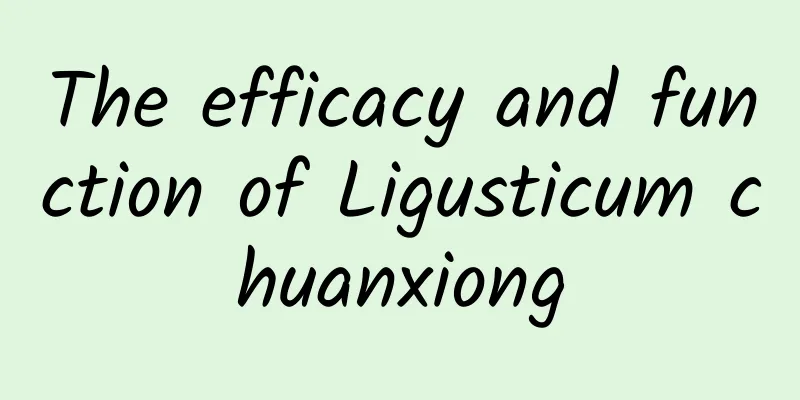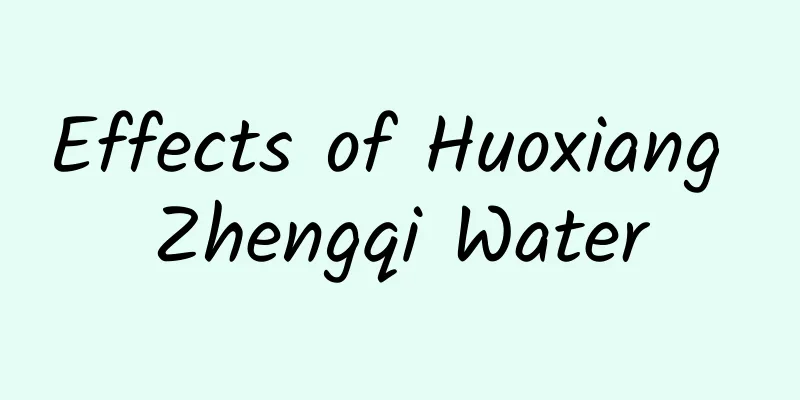The efficacy and function of Tibetan pepper

|
There are many common Chinese medicinal materials in life, Tibetan pepper is one of them. However, many people are not very clear about Tibetan pepper. Therefore, before choosing to eat it, you need to understand the effects and functions of Tibetan pepper. [Alias] Tibetan wild pepper [Source] Medicinal material source: The fruit of Zanthoxylum bungeanum of the Rutaceae family. 【Original form】 Climbing shrub, 1m high. Young branches slightly pubescent, then almost glabrous, dark gray, with short, downward-curved prickles. The odd-pinnate compound leaves are alternate, papery, and 10-15cm long including the petiole; the petiole is 1-2.5cm long, the surface of the petiole and rachis is sunken into small grooves, covered with short soft hairs, and with short and downward-curved spines; the petiolules are very short; the leaflets are 9-15, ovate, broadly ovate or oblong ovate, 2.5-5m long, 1.5-3.5cm wide, with acute or cusp at the apex, broadly cuneate or nearly rounded at the base, with sharp serrations on the margins, and thick glandular dots on the serrations and back of the leaves, dark green and shiny above, light green below, with 10-14 pairs of lateral veins, connected into a net before reaching the leaf margin, the vein net is very dense, slightly convex on both sides. The inflorescence is terminal and dioecious; the rachis and pedicels are almost glabrous, sometimes with short, downward-curved prickles. The fruit pedicel is round, 5-8mm long, and the carpels are usually 4. When immature, the follicles are nearly spherical, with a diameter of 4-5mm. When mature, the fruit lobes are larger, with a diameter of 6-7mm. The peel is brown-brown, and the oil spots on the peel become sunken and pit-shaped after drying, which are gray-black to brown-black. The seeds are spherical, black and shiny. Fruiting period is September-October. [Habitat distribution] Ecological environment: Growing in evergreen broad-leaved forests at an altitude of 2000-2900m. 【Nature and flavor】 Pungent; warm; slightly toxic 【Functions and indications】Warms the middle and dispels cold; dries dampness and kills insects. It is used for cold and dampness injuring the middle part of the body; cold pain in the abdomen; vomiting; diarrhea; dysentery; abdominal pain caused by roundworms [Usage and Dosage] For oral use: decocted in water, 1.5-3g. 【Excerpt】 Chinese Materia Medica Nowadays, people's life pressure is constantly increasing, which makes our bodies often in a state of fatigue. Tibetan pepper, as a traditional Chinese medicine, has a certain regulating effect on the body. I hope it will be helpful to everyone. |
<<: The efficacy and function of Tibetan pepper seeds
>>: The efficacy and function of Saussurea odorata
Recommend
How to eat medicinal beans and their effects
There are many ways to eat yam beans. You can coo...
Side Effects of Valerian
When it comes to valerian, many people may feel v...
Is it good to take Chinese patent medicine for cold and dampness in spleen and stomach?
Patients with worsening spleen and stomach cold a...
The efficacy and function of Pedicularis chinensis
Big-lipped Pedicularis is a Chinese medicinal mat...
"The most mysterious bird in the world" actually looks like this!
Your browser does not support the video tag Septe...
The efficacy and function of pine branches and leaves
As people's living standards continue to impr...
What are the effects and functions of water ganoderma
Traditional Chinese medicine is a category of med...
The efficacy and role of selenium
Selenium is a trace element and plays a very impo...
You have no idea how ridiculous the reasons why you gain weight are...
One minute with the doctor, the postures are cons...
The efficacy and function of Yunnan meat stick
Yunnan meat stick is a kind of Chinese herbal med...
The efficacy and function of fennel stems and leaves
In fact, the occurrence of many human diseases is...
The efficacy and function of real gourd
The real gourd has a long history, and until now,...
Kidney-tonifying and brain-benefiting tablets
If you feel your body is particularly uncomfortab...
The efficacy and function of loquat leaves
I don’t know if you are familiar with loquat leav...
Are you enjoying the joy of shopping before the holidays? Beware! This type of fraud calls are common →
"Hello, I am the customer service of ×× Expr...









